
views
Choosing and Baiting Traps
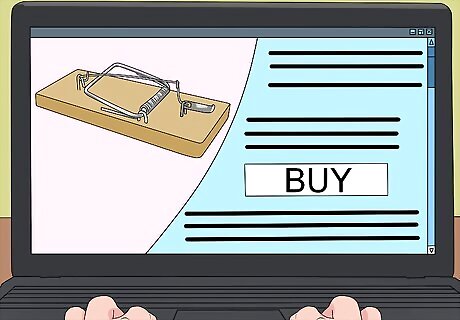
Purchase several traps. Mouse traps come in many types, including traditional spring-loaded traps, electric traps, and glue traps. They vary in their method of eliminating mice but are handled in basically the same way. These can all be purchased at most hardware stores and online. Multiple traps are useful for ensnaring a single mouse, but mice spread quickly so you may have more than one in your home. Avoid poison. The mouse will eat the poison and die somewhere hidden. In addition, the poison can be eaten by children and animals. Glue traps are the least humane. The mouse will either starve to death or chew off its own leg and die in an unknown location.
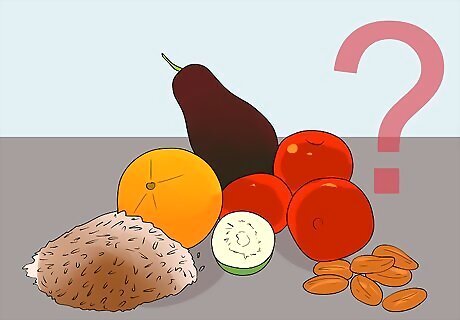
Pick a bait. Forget the idea that mice eat cheese. While cheese can work, mice eat grains, fruit, and seeds in the wild. Peanut butter is a common household foodstuff that mice love. High-fat, high-protein, and sugary foods also attract them, such as bacon and chocolate. The stronger the object smells and the softer it is, the more likely the mouse will be to respond.
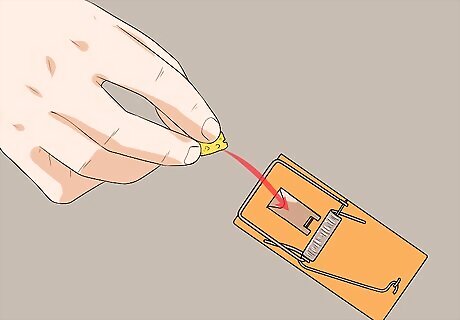
Bait a trap. Be careful not to use too much bait. Keep your bait to the size of a pea and place it firmly inside the trap. Many people make the mistake of adding too much bait. On a spring trap, for example, this allows the mouse to eat without stepping onto the trap. It is best to bait the trap before you set it. In spring-loaded traps, for example, it’s easy to trigger the trap and have it snap closed on your fingers. Keeping the bait thin can also force the mouse to work more to eat it. Peanut butter for instance when left in a thin coating will start to dry.
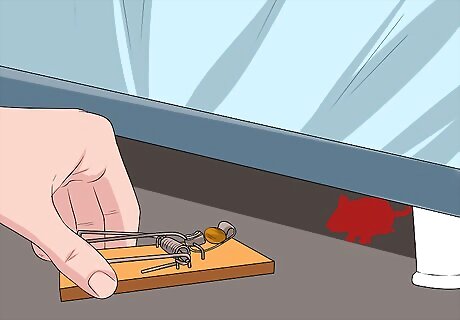
Find a location where you think the mice will be. Mice like enclosed dark spaces, such as in a cupboard or under furniture. They often stick near walls when scurrying about. You may find rat droppings or smell urine.
Setting the Traps
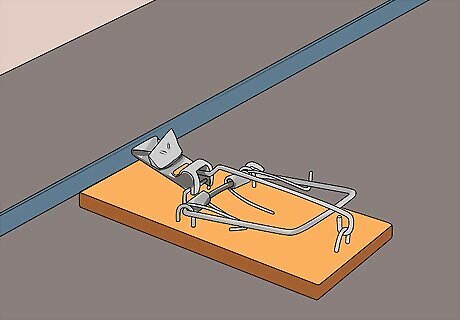
Place a trap. Go back to where you found evidence of the mouse. Now push the trap all the way to the wall. The baited trigger part or opening should be in contact with the wall. For a standard spring trap, the mechanical part should be away from the wall. Mice run along the wall, so this is more likely to attract them and, if the trap is perpendicular to the wall, prevent them from triggering it prematurely. EXPERT TIP Cheyenne Main Cheyenne Main wikiHow Staff Writer Cheyenne Main is an Editing Fellow at wikiHow, currently living in Kansas City. She has over four years of editorial experience, with work published in a variety of literary magazines. In 2023, she graduated from Cottey College with a BA in English and History. Now, Cheyenne loves learning new topics and helping to create well-researched, accessible resources for readers. Cheyenne Main Cheyenne Main wikiHow Staff Writer "When my house was invaded by mice during the fall, I used this multi-hatch indoor mouse trap that captures them safely and humanely. I just smeared a scoop of peanut butter on the inside, closed it up, and placed it on the floor so the entrances ran along the edge of the wall. The next morning, I released the mice at a park a few miles away, and repeated that process until all the mice were gone!"
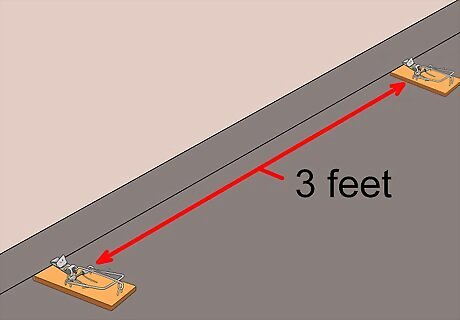
Set multiple traps. At a maximum of two or three feet (.6-.9 meters) away along the wall, set another trap. Repeat this in both directions until the high-traffic areas are covered. Of course, even for one mouse, multiple baited traps increase the likelihood of catching it. But if one mouse got in, another might have also and they reproduce quickly. You may have multiple areas with a lot of mice traffic. Cover those areas too.
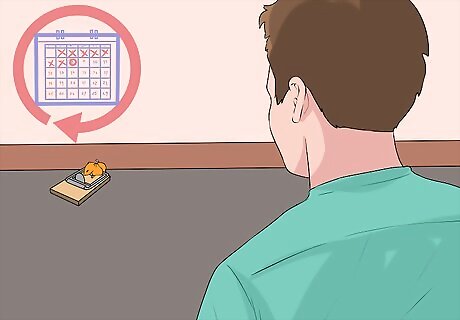
Check the traps every day. Return often to see if the trap has been activated. If you’ve caught a mouse, you need to dispose of it quickly or else the mouse will start to decompose, creating an awful smell while attracting other pests and bacteria.
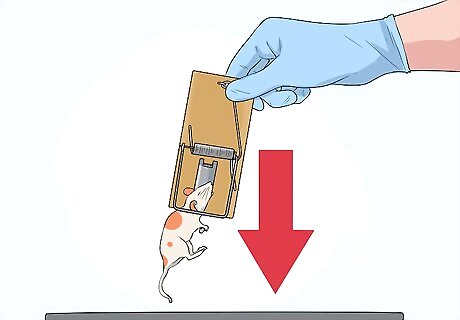
Dispose of the mouse. Put on protective gloves and possibly a breathing mask. Throw disposable traps away and take them to the dumpster to avoid lingering smells in your home. When on a budget, traps can be reused. Scrub them thoroughly with soap and water while wearing disposable gloves. Throw the gloves away before resetting the traps.
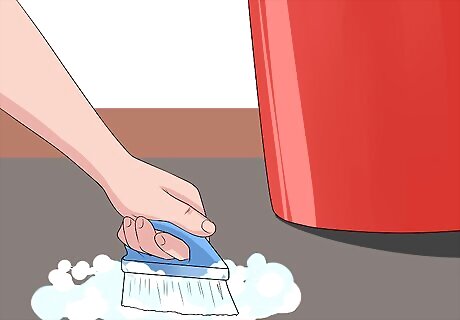
Clean up contaminated areas. Be sure to wash your hands after handling the mouse and cleaning up your house. Pick up droppings with a paper towel, launder fabrics, and scrub surfaces with soap and water to avoid exposure to harmful bacteria.
Making a Humane Trap
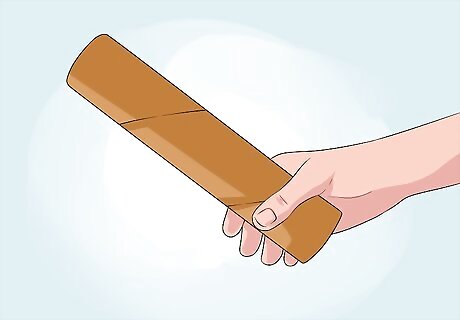
Get a paper towel tube. Save an empty cardboard tube from a roll of paper towels or toilet paper. Similar objects can be used as long as they’re big enough for the mouse to fit inside but also flimsy enough to not support the mouse’s weight. Stores may also carry humane traps. Check at your hardware store or online.
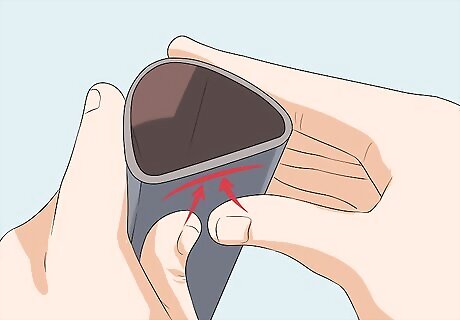
Flatten one side of the tube. Run your fingers along the length of the tube on one side, pressing in as you go. When finished, the tube should be able to rest flat-side-down on a counter or table.
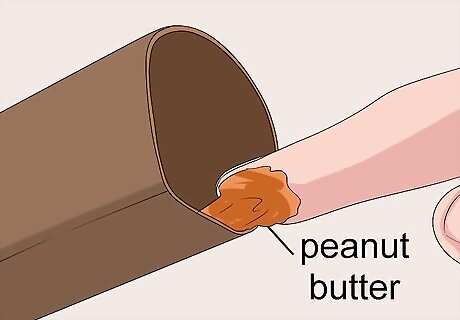
Bait the tube. Place bait on one end of the tube. A small dollop of peanut butter, some cracker crumbs, or a sliver of bacon will be enough to attract the mouse. Peanut butter works well because it sticks to the inside of the tube.
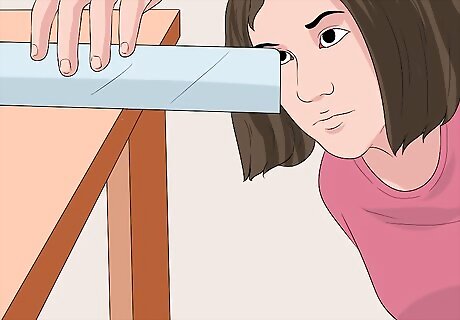
Balance the tube on the edge of a counter or table. Choose an edge that is a few feet off the ground but also has some free floor space under it. Place the tube flat-side-down with the baited end off the counter, then push the tube until it is half off the edge. If you’re having trouble getting the tube to stay still or balance, you can tape it lightly. Make sure the tape isn’t holding it tight enough that it won’t move when the mouse is inside. If you do not have a table or counter that will work, you can instead construct a ramp up to the top of the bucket. Numerous objects, including cardboard or stacked wood, can be used as long as the ramp is sturdy enough to support the mouse’s weight.
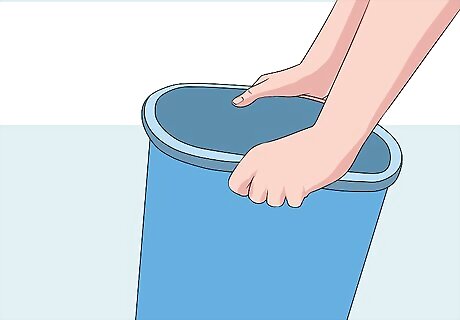
Get a bucket or trashcan. Find an empty container that will catch the mouse. Make sure the container is at least two feet tall or else the mouse may escape the trap.
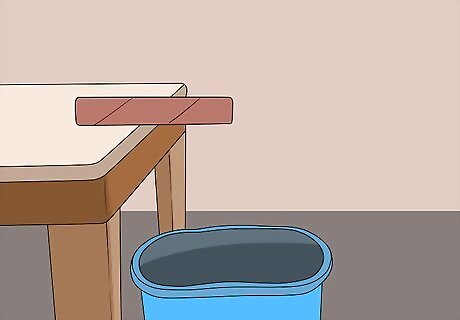
Place the bucket underneath the tube. Your catching container goes directly under the baited end of the tube hanging off the table. When the mouse moves in to get the bait, its weight causes the tube to fall off the table and into the bucket.
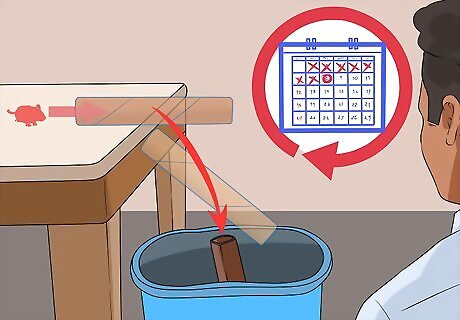
Check your trap frequently. Come back at least once a day to see if the tube is in place, the bait has been eaten, or a mouse is in the bucket. Make adjustments, such as rebalancing the tube. If a mouse is caught, it must be moved soon or else it will starve. Starving mice will also eat one another.
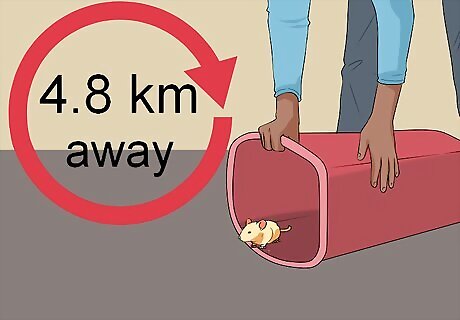
Release the mouse outside. The mouse needs to be moved at least a mile (1.6 km) away. This prevents the mouse from returning to your home. To keep the mouse safe from predators, go no further than three miles (4.8 km). Find an area with cover, such as wooded areas, wood piles, or rocky ground and consider leaving food in such enclosed areas until the mouse can get established. Food options include uncooked oatmeal, peanuts, bird seed, and dry pet food.
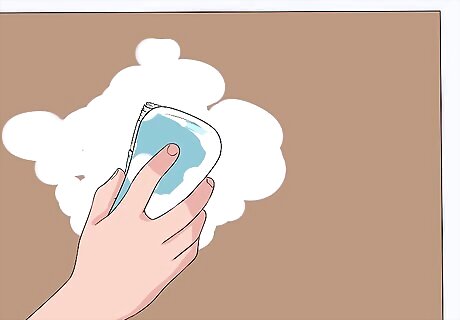
Disinfect surfaces where the mouse has traveled. These surfaces may contain dangerous bacteria from the mouse. Pick up droppings using paper towels and scrub surfaces with soap and water. Don’t forget to wash your hands.

















Comments
0 comment